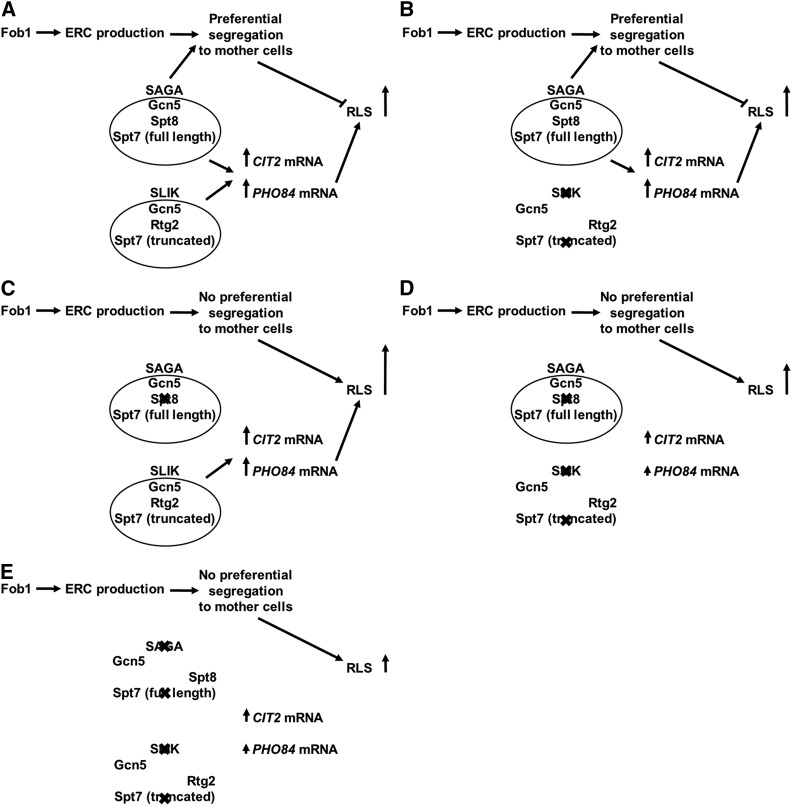Figure 8.
Schematic summarizing the discussion of the role of SAGA/SLIK in the RLS of rho0 cells. (A) Depiction of the situation in wild-type cells. (B–E) The effects of elimination of SAGA/SLIK components on expression of retrograde-response target genes, segregation of ERCs to mother cells, and RLS. In B, there is no effect on RLS because preventing Spt7 cleavage leaves SAGA activity unaltered to support a wild-type retrograde transcriptional response, and eliminating the intact SLIK complex has no impact on ERCs. In C, RLS increases because eliminating Spt8 from SAGA reduces ERC accumulation in mother cells but leaves SLIK activity unaltered to support a wild-type retrograde response. In D, there is no effect on RLS, despite the loss of both an intact SLIK complex and SAGA complex activity and the attendant retrograde response, because the elimination of Spt8 from SAGA reduces ERC accumulation in mother cells. In E, RLS decreases by elimination of Spt7 and the resulting disruption of both SAGA and SLIK complexes even though the impairment of the retrograde response and reduction in ERC accumulation in mother cells is indistinguishable from that given by the situation in D. The different outcomes in D and E imply that SAGA has an additional unknown function(s) in promoting RLS that can be executed by the partial SAGA complex lacking only Spt8. Other possibilities include additional functions in the cell of SAGA components, such as Spt8, that have a negative effect on RLS when not assembled into intact SAGA complexes.

